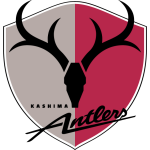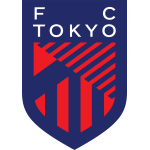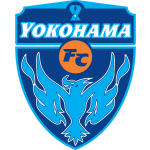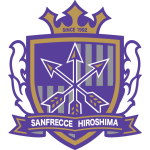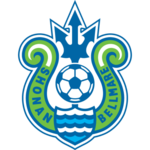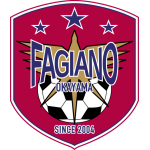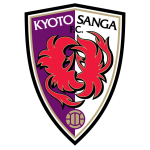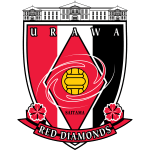J1 League (Japan) - Previsões de futebol IA online
.
| AI | ||
|---|---|---|
 J1 League J1 League | ||
| 2025-03-29 06:00 |
| |
| 2025-03-29 06:00 |
| |
| 2025-03-29 08:00 |
| |
| 2025-04-02 10:00 |
| |
| 2025-04-02 10:00 |
| |
| 2025-04-02 10:00 |
| |
| 2025-04-02 10:00 |
| |
| 2025-04-02 10:00 |
| |
| 2025-04-02 10:00 |
| |
| 2025-04-02 10:00 |
| |
| 2025-04-02 10:00 |
| |
| 2025-04-02 10:00 |
| |
| 2025-04-02 10:30 |
| |
| 2025-04-05 05:00 |
| |
| 2025-04-06 04:00 |
| |
| 2025-04-06 05:00 |
| |
| 2025-04-06 05:00 |
| |
| 2025-04-06 05:00 |
| |
| 2025-04-06 05:00 |
| |
| 2025-04-06 06:00 |
| |
| 2025-04-06 06:00 |
| |
| 2025-04-06 06:00 |
| |
| 2025-04-06 06:00 |
| |
| 2025-04-09 10:00 |
| |
| 2025-04-11 10:00 |
| |
Explorando as Emoções da J1 League: A Principal Competição de Futebol do Japão
A J1 League, a liga de futebol profissional de primeira linha do Japão, estabeleceu-se como um cenário vibrante e competitivo. Desde sua criação no início dos anos 1990, a liga cresceu não apenas em popularidade, mas também na qualidade do futebol jogado. Com clubes imersos em ricas histórias e torcidas apaixonadas, a J1 League se destaca como um farol da cultura do futebol na Ásia. A cada temporada, a liga apresenta partidas emocionantes, talentos de classe mundial e uma mistura única de tradição e modernidade que cativa os fãs localmente e globalmente.
A Evolução da J1 League
Originalmente fundada em 1993 como J.League, a J1 League passou por uma transformação significativa ao longo dos anos. A liga foi criada para profissionalizar o futebol no Japão, afastando-se da era amadora da Japan Soccer League. Os primeiros anos da J.League viram um aumento no interesse, com clubes como Kashima Antlers e Yokohama F. Marinos rapidamente se estabelecendo como potências. A estrutura da liga evoluiu, incorporando um sistema de promoção e rebaixamento ao lado da J2 League, o que adicionou profundidade competitiva. Esse sistema permitiu que clubes de várias regiões do Japão mostrassem seu talento e ambição, promovendo uma rica cultura futebolística em todo o país.
Clubes e Rivalidades que Definem a Liga
No coração da J1 League estão seus clubes, cada um com identidades únicas, histórias coloridas e apoiadores dedicados. O time mais bem-sucedido na história da liga, Kashima Antlers, possui numerosos títulos, incluindo a prestigiosa AFC Champions League, solidificando seu status como uma força dominante no futebol asiático. Sua feroz rivalidade com o Gamba Osaka, outro clube bem-sucedido com uma torcida apaixonada, exemplifica a intensa competição dentro da liga. As partidas entre essas equipes são frequentemente caracterizadas por atmosferas elétricas, alta tensão...
es drama, e momentos de brilho individual de jogadores como o ex-atacante estrela do Gamba, Ademilson, cujas contribuições frequentemente desequilibravam a balança em encontros cruciais.O Impacto dos Jogadores Internacionais
A J1 League está se tornando cada vez mais um destino para talentos internacionais, aumentando seu perfil e competitividade. Os clubes estão ansiosos para atrair jogadores de todo o mundo, com contratações de alto nível adicionando ao apelo da liga. Jogadores notáveis como Andrés Iniesta e Fernando Torres já passaram pela liga, trazendo consigo não apenas habilidade, mas também imenso valor comercial e visibilidade. Sua presença despertou o interesse entre jogadores mais jovens, inspirando uma nova geração de talentos no Japão. Estrelas locais como Takefuso Kubo, que tem se destacado no futebol europeu, frequentemente creditam a liga como um passo vital em seu desenvolvimento.
Cultura de Torcedores e Engajamento Comunitário
A cultura que envolve a J1 League é tão vibrante quanto o próprio futebol. Os torcedores desempenham um papel integral na criação da atmosfera elétrica que define os dias de jogo. Cada clube tem sua cultura de torcedores única, com apoiadores dedicados frequentemente viajando longas distâncias para torcer por suas equipes. Os cânticos, bandeiras e exibições coloridas criam um espetáculo visual e auditivo que enriquece a experiência de assistir a uma partida. Além disso, os clubes se envolvem com suas comunidades por meio de iniciativas de base, programas para jovens e eventos de caridade, promovendo um forte vínculo entre as equipes e seus apoiadores. O investimento emocional que os torcedores têm em seus clubes é palpável, com vitórias celebradas com paixão e derrotas lamentadas coletivamente.
O Futuro da J1 League
À medida que a J1 League continua a evoluir, enfrenta tanto desafios quanto oportunidades. A crescente globalização do futebol apresenta uma ameaça, com os melhores jogadores sendo atraídos para ligas mais ricas. No entanto, a J1 League está se posicionando estrategicamente para combater isso, investindo em desenvolvimento juvenil e infraestrutura. Os clubes estão focando em nutrir talentos locais e melhorar suas instalações para atender aos padrões internacionais. Além disso, a parceria da liga com redes de transmissão internacionais visa aumentar a visibilidade e atrair um público mais amplo. O potencial de crescimento permanece imenso, com a liga pronta para ser um jogador vital no cenário do futebol asiático.
Em conclusão, a J1 League é uma tapeçaria envolvente de competição, comunidade e cultura. Ela incorpora o espírito do futebol japonês, onde a tradição encontra a modernidade e a paixão alimenta o jogo. À medida que a liga continua a expandir seu alcance e melhorar sua qualidade, promete proporcionar mais momentos e histórias inesquecíveis que ressoam com os fãs ao redor do mundo. Seja você um apoiador de longa data ou um novato no esporte, a J1 League oferece uma experiência cativante que exemplifica a beleza do futebol.
 English
English  Español
Español  Italiano
Italiano  Deutsch
Deutsch  Polski
Polski  Português
Português  Français
Français  Nederlands
Nederlands  Svenska
Svenska  Türkçe
Türkçe  Hrvatski
Hrvatski 

